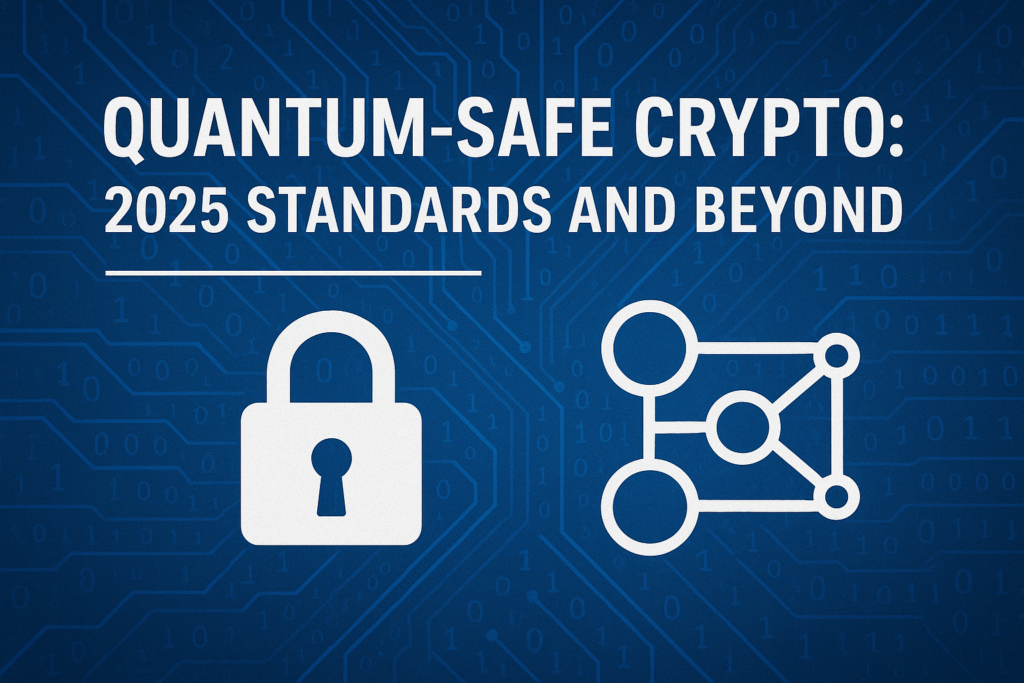In an era where quantum computing is no longer science fiction but a rapidly approaching reality, the world of cryptography is undergoing a profound transformation. Quantum-safe cryptography, also known as post-quantum cryptography (PQC), promises to shield our digital lives from the unprecedented power of quantum machines. As we step into 2025, new standards are solidifying, paving the way for a more secure future. This article dives into the essentials of quantum-safe crypto, the latest developments in standards, the hurdles ahead, and what lies beyond the immediate horizon.

The Looming Quantum Threat
Quantum computers operate on principles vastly different from classical ones, leveraging qubits that can exist in multiple states simultaneously. This allows them to solve complex problems at speeds unimaginable today. Algorithms like Shor’s could crack widely used encryption methods such as RSA and ECC, which rely on the difficulty of factoring large numbers or solving discrete logarithms.
The risk isn’t hypothetical. Experts predict that a cryptographically relevant quantum computer (CRQC) might emerge as early as 2027, according to some forecasts. While full-scale quantum systems are still years away, the “harvest now, decrypt later” strategy poses an immediate danger: adversaries could collect encrypted data today and decrypt it once quantum tech matures. Industries from finance to healthcare are racing to adapt, making quantum-safe crypto not just a tech upgrade but a necessity for long-term security.
What Makes Crypto Quantum-Safe?
Quantum-safe algorithms are designed to resist attacks from both classical and quantum computers. Unlike current systems, they draw from mathematical problems believed to be hard even for quantum machines, such as lattice-based, hash-based, or code-based cryptography.
The goal is “crypto-agility”—systems that can switch algorithms seamlessly without overhauling infrastructure. This flexibility is crucial as threats evolve. For instance, hybrid approaches combine traditional and quantum-safe methods during transitions, ensuring backward compatibility while building resilience.
NIST’s Pivotal Role in Standardization
The National Institute of Standards and Technology (NIST) has been at the forefront of this shift. Their PQC standardization process, launched in 2016, involved evaluating dozens of submissions from global researchers. After rigorous rounds of testing for security, performance, and implementation ease, NIST finalized the first batch of standards in August 2024.
These include:
- FIPS 203: ML-KEM (Module-Lattice-Based Key-Encapsulation Mechanism) – Based on the CRYSTALS-Kyber algorithm, this handles key exchange and encapsulation. It’s efficient for general-purpose encryption, making it ideal for secure communications like TLS.
- FIPS 204: ML-DSA (Module-Lattice-Based Digital Signature Algorithm) – Derived from CRYSTALS-Dilithium, it focuses on digital signatures, verifying authenticity in software updates and certificates.
- FIPS 205: SLH-DSA (Stateless Hash-Based Digital Signature Algorithm) – Rooted in SPHINCS+, this hash-based option provides a backup for scenarios where lattice methods might face unforeseen vulnerabilities.
These standards mark a milestone, offering blueprints for governments and industries to integrate quantum resistance. By 2025, adoption is accelerating, with federal agencies mandated to prepare under initiatives like the U.S. National Security Memorandum on quantum computing.
Adoption in 2025: Progress and Practical Steps
Entering 2025, the focus shifts from development to deployment. Major players are already integrating these standards. Microsoft, for example, has outlined a Quantum Safe Program aiming for full PQC adoption by 2030, aligning with government timelines. Web browsers and servers are testing PQC in protocols like HTTPS, with analyses showing varying levels of readiness among top websites.
Federal systems are prioritizing crypto-agile solutions to protect sensitive data. In the private sector, companies like PQShield are providing guidance on compliance, emphasizing that these standards impact everything from cloud services to IoT devices.
Practical steps for organizations include:
- Inventorying Assets: Identify where vulnerable crypto is used.
- Testing Hybrids: Implement combined systems to ease migration.
- Key Management Overhaul: Adopt tools for handling larger keys and frequent rotations, as PQC often requires more computational resources.
Challenges on the Horizon
Despite the momentum, adoption isn’t straightforward. Performance overhead is a key issue—PQC algorithms can demand more processing power and larger key sizes, potentially slowing down devices like smartphones or embedded systems. Integration with legacy infrastructure poses another hurdle, requiring careful planning to avoid disruptions.
Regulatory pressures add complexity. The UN’s declaration of 2025 as the International Year of Quantum Science and Technology underscores the urgency, but global harmonization is needed to prevent fragmented standards. Moreover, while NIST’s picks are robust, ongoing scrutiny is essential; side-channel attacks or new quantum breakthroughs could necessitate updates.
Experts highlight that migration is a multi-year endeavor, with heatmaps tracking progress since early 2025 showing gradual shifts in standards. Building “post-quantum resilience” involves not just tech but a cultural shift toward proactive security.
Looking Beyond 2025: Emerging Trends
The journey doesn’t end with these standards. NIST is evaluating additional algorithms, including stateful hash-based signatures and more lattice variants, for future rounds. Quantum key distribution (QKD) offers an alternative, using quantum mechanics for key exchange, though the NSA favors PQC for its practicality.
In broader applications, quantum-safe crypto is vital for AI, 5G networks, and blockchain, where securing decentralized systems against quantum threats could redefine trust. Research into error-corrected quantum systems will influence crypto evolution, potentially leading to even stronger defenses.
As threats like ransomware grow more sophisticated, quantum-safe measures could integrate with zero-trust architectures, creating layered security ecosystems.
Quantum-safe cryptography in 2025 represents a critical pivot toward a resilient digital world. With NIST’s standards providing a solid foundation, the emphasis now is on strategic adoption to outpace quantum risks. While challenges remain, the innovations ahead promise not just survival but a thriving, secure future. Staying informed and agile will be key as we navigate this quantum frontier—after all, in cryptography, preparation is the ultimate encryption.